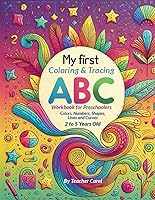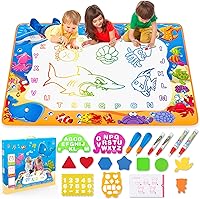Last Updated on April 20, 2025 by Lila Sjöberg
We all know that moment—you’ve bought your child the perfect gift, wrapped it beautifully, and eagerly anticipated their excitement… only to be met with a polite “thanks” and the gift quickly set aside. Or perhaps you’ve planned a special outing, but your child seems more interested in staying home and talking with you instead. If these scenarios sound familiar, you might be speaking a different “love language” than your child.

The 5 Love Languages: Not Just for Romantic Relationships
When Dr. Gary Chapman first introduced the concept of love languages in his bestselling book, many people associated these primarily with romantic relationships. But children, just like adults, have preferred ways of giving and receiving love. Understanding these languages can transform your relationship with your child and deepen your bond in ways you never imagined.
As a parent who’s navigated the sometimes confusing waters of raising children, I’ve found that recognizing these different expressions of love can be a game-changer. Let’s dive into how these love languages manifest in children and what you can do to speak your child’s language fluently.
Words of Affirmation: The Power of What You Say
Some children thrive on verbal acknowledgment and praise. These kids light up when you tell them how proud you are of their achievements or simply express your love through words.
How to identify if this is your child’s love language:
- They frequently ask if you like their artwork or achievements
- They remember compliments you gave them days or weeks ago
- They become visibly energized after receiving praise
- They’re deeply affected by critical words
Ways to connect with a “Words of Affirmation” child:
- Leave surprise notes in their lunchbox
- Create bedtime rituals that include expressing what you appreciate about them
- Acknowledge effort, not just results
- Be specific with your praise: “I love how you used those bright colors in your drawing” instead of “Nice picture”
“The words we speak to our children become their inner voice. Choose them wisely.” – Unknown
Quality Time: Being Fully Present
For some children, nothing says “I love you” more clearly than your undivided attention. These children value shared experiences and one-on-one time above all else.
How to identify if this is your child’s love language:
- They frequently ask you to play with them or watch them do activities
- They’re disappointed when you have to cancel plans together
- They often say things like “Look at me!” or “Watch this!”
- They mention or recall times you spent together
Ways to connect with a “Quality Time” child:
- Create daily rituals of connection, even if brief
- Put down your phone and make eye contact when they’re speaking
- Plan regular one-on-one “dates” with them
- Engage in their chosen activities, even if they’re not your favorite
I remember how my daughter would consistently ask me to sit on the floor and play dolls with her. Initially, I’d try to multitask—folding laundry while half-heartedly participating. Once I recognized quality time as her love language, I learned that 15 minutes of my complete attention was worth more than an hour of distracted presence.
Receiving Gifts: Thoughtful Tokens of Love
Contrary to popular belief, this love language isn’t about materialism. For these children, a physical gift represents the thought and care that went into selecting something just for them.
How to identify if this is your child’s love language:
- They treasure and remember who gave them each gift
- They notice when you bring them small surprises
- They save mementos and tokens from special occasions
- They put great thought into gifts they give to others
Ways to connect with a “Gifts” child:
- Bring small, meaningful surprises (not necessarily expensive)
- Wrap gifts creatively to enhance the experience
- Create handmade tokens of affection
- Display items they’ve given you prominently

Acts of Service: Love in Action
Some children interpret help and practical assistance as expressions of love. These children notice and appreciate when you go out of your way to make their lives easier or more pleasant.
How to identify if this is your child’s love language:
- They frequently ask for help, even with tasks they can handle
- They express significant gratitude when you help them
- They’re acutely aware of things you do for them
- They offer to help you with your tasks
Ways to connect with an “Acts of Service” child:
- Help them with a challenging homework assignment
- Fix a broken toy promptly
- Make their favorite meal “just because”
- Create organizational systems that make their responsibilities easier
“When I realized my son’s love language was acts of service,” shares Maria, a mother of three, “I started packing his lunch with extra care, cutting sandwiches into fun shapes and including little notes. The change in our relationship was remarkable—he began sharing more about his day and seemed more secure in our relationship.”
Physical Touch: Comfort Through Contact
Many children experience love most powerfully through physical connection. For these children, hugs, cuddles, and physical proximity communicate care more than words ever could.
How to identify if this is your child’s love language:
- They frequently seek physical proximity or contact
- They enjoy roughhousing, cuddles, or sitting close
- They may be more physically demonstrative than others in the family
- They’re comforted by touch when upset
Ways to connect with a “Physical Touch” child:
- Establish daily hugging rituals
- Offer back rubs or hair brushing before bedtime
- Hold hands during walks
- Use appropriate physical touch during conversations, like a hand on the shoulder
Mixed Languages and Changing Preferences
It’s important to note that many children (and adults) have more than one primary love language, and preferences can shift as they grow. A toddler who craved constant physical touch might evolve into a teenager who values quality time or words of affirmation.
The key is ongoing observation and adaptation to your child’s changing needs.
How to Determine Your Child’s Love Language
Figuring out how your child best receives love isn’t always straightforward, but here are some practical approaches:
- Observe their requests: What do they ask for most often? (“Play with me!” might signal quality time; “Do you like my drawing?” might indicate words of affirmation)
- Watch how they express love to you: Children often give love in the way they prefer to receive it
- Try the process of elimination: Intentionally focus on one love language each week and note their response
- For older children: Have direct conversations or try age-appropriate quizzes about preferences
| Age Group | Identifying Clues | Adaptation Strategies |
|---|---|---|
| Toddlers (1-3) | Watch their reactions to different approaches | Keep expressions simple and consistent |
| Preschoolers (3-5) | Notice what calms them when upset | Use their favorite language during transitions |
| School Age (6-12) | Listen to their complaints when feeling unloved | Teach them to recognize and request their needs |
| Teens (13+) | Have direct conversations | Respect changing preferences and boundaries |
When Your Child’s Love Language Differs From Yours
One of the most challenging aspects of parenting can be when your child’s primary love language differs significantly from your own. If you thrive on words of affirmation but your child seeks quality time, you might find yourself frustrated that your compliments don’t seem to “work.”
The solution lies in intentional practice and stepping outside your comfort zone. I’ve found it helpful to set reminders or create systems that help me remember to express love in ways that don’t come naturally to me.
FAQs About Children’s Love Languages
At what age can I identify my child’s love language?
Even infants show preferences in how they receive comfort, but love languages typically become more distinct around ages 3-5 when children can better express their needs and preferences.
Can a child’s love language change over time?
Absolutely. While some fundamental preferences may remain, expression of love languages often evolves with developmental stages and life experiences.
What if I can’t determine my child’s primary love language?
Many children respond to multiple love languages. Focus on providing balanced exposure to all five while noting which ones seem to create the strongest connection.
How do special needs affect the expression of love languages?
Children with sensory processing issues or neurodevelopmental differences may have unique expressions of love languages. Working with their healthcare providers can help you adapt these concepts appropriately.
Balancing Act: Speaking All Five Languages
While identifying your child’s primary love language is valuable, it’s equally important to “speak” all five languages regularly. This ensures your child develops the ability to both give and receive love in multiple ways, preparing them for diverse relationships throughout life.
Dr. Ross Campbell, a child psychiatrist who partnered with Chapman to apply love languages to children, emphasizes that meeting a child’s “emotional tank” through their primary love language creates security that supports development in all areas.
Conclusion: The Lasting Impact of Speaking Your Child’s Language
Understanding and consistently speaking your child’s love language isn’t just about having a more peaceful household today—it’s about building their emotional intelligence and capacity for healthy relationships tomorrow.
When children feel genuinely loved and understood, they develop the security and confidence to navigate life’s challenges. They learn to recognize and communicate their emotional needs appropriately and become more attuned to the needs of others.
I encourage you to start your love languages journey today. Begin by observing your child more closely this week. What lights them up? What seems to fill their emotional tank? The insights you gain might transform not just your relationship with them, but their future relationships as well.
What steps will you take to better understand and speak your child’s love language this week? Share your experiences in the comments below or join our parenting community for more support and ideas.

My References to write this article:











